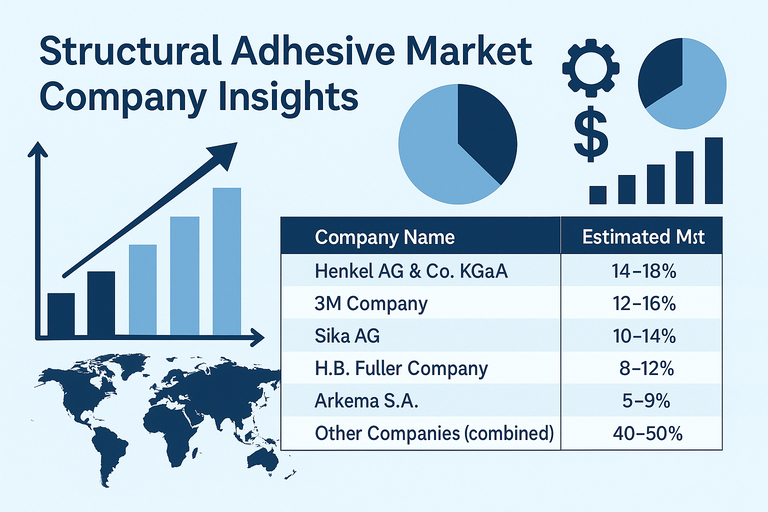The Structural adhesives are transforming aerospace engineering by providing reliable and lightweight bonding solutions for advanced materials. These adhesives are now essential for composite bonding, supporting goals such as reduced fuel consumption, increased design flexibility, and overall operational efficiency.
Introduction to Structural Adhesives in Modern Engineering
Structural adhesives have evolved from basic bonding agents to critical components in modern industrial applications. Initially used in construction and automotive sectors, they have now taken center stage in aerospace manufacturing. Their ability to bond different materials, distribute mechanical stress evenly, and reduce the need for traditional fasteners makes them highly valuable. As the aviation industry demands more efficient and sustainable solutions, structural adhesives are helping reshape aircraft design and production.
𝐋𝐞𝐚𝐫𝐧 𝐚𝐛𝐨𝐮𝐭 𝐭𝐡𝐞 𝐜𝐨𝐧𝐭𝐫𝐢𝐛𝐮𝐭𝐢𝐨𝐧 𝐨𝐟 𝐞𝐚𝐜𝐡 𝐬𝐞𝐠𝐦𝐞𝐧𝐭 𝐨𝐟 𝐭𝐡𝐞. 𝐑𝐞𝐚𝐝 𝐚 𝐒𝐚𝐦𝐩𝐥𝐞 𝐑𝐞𝐩𝐨𝐫𝐭: https://www.futuremarketinsights.com/reports/sample/rep-gb-2667
The Aerospace Industrys Shift Towards Lightweighting
- In aerospace, reducing aircraft weight is a key strategy to improve fuel efficiency and lower emissions. Jet fuel accounts for a significant portion of airline operational costs, making every kilogram of weight savings important. Composites such as carbon fiber reinforced polymers are being increasingly used instead of traditional metals like aluminum and titanium due to their higher strength to weight ratio.
- However, joining these modern materials presents challenges. Conventional methods like riveting and welding may damage composites or fail to provide long lasting strength. High performance structural adhesives offer a superior alternative by bonding materials without compromising their mechanical integrity. These adhesives also resist thermal expansion and perform reliably under the extreme conditions encountered in flight.
Why Structural Adhesives are Crucial for Composite Bonding
Structural adhesives used in aerospace are specially formulated for strength, durability, and resistance to temperature changes. A major advantage is their ability to distribute load uniformly, avoiding stress concentration points that can cause cracks or fatigue. In aerospace design, even small flaws can have serious consequences, making structural integrity critical.
Additionally, adhesives allow engineers to bond complex shapes and designs that would be difficult with bolts or welds. This opens up new design possibilities, such as integrated wing structures and single shell fuselages, leading to both weight savings and better aerodynamics. For this reason, adhesives are not just an alternative but are becoming a preferred bonding method.
𝐁𝐫𝐨𝐰𝐬𝐞 𝐭𝐡𝐞 𝐂𝐨𝐦𝐩𝐥𝐞𝐭𝐞 𝐑𝐞𝐩𝐨𝐫𝐭! https://www.futuremarketinsights.com/reports/structural-adhesives-market

Case Studies Highlighting the Use of Adhesives in Aerospace
Major aerospace manufacturers like Boeing and Airbus have widely adopted structural adhesives. The Boeing 787 Dreamliner uses nearly 50 percent composite materials by weight, made possible by advanced adhesives. These bonding agents are used throughout the fuselage, wings, and tail to attach composite panels and components.
Airbus also employs structural adhesives in its A350 XWB aircraft. Adhesives are applied in load bearing areas such as frames and stringers. This reduces the need for mechanical fasteners and speeds up the assembly process, resulting in cost savings and improved production efficiency.
These examples show how adhesives have become integral to next generation aircraft, not just in minor joints but in critical structural applications.
Innovation and Future Outlook in Aerospace Grade Adhesives
- Ongoing research in adhesive technology is focused on faster curing times, broader temperature resistance, and better compatibility with emerging materials. Hybrid adhesives that combine the strength of epoxy with the flexibility of polyurethane or acrylics are being developed to meet the demands of modern aerospace applications.
- Sustainability is another key area of development. Manufacturers are creating low VOC and recyclable adhesive systems to meet environmental regulations. The structural adhesive market is expected to grow at a compound annual growth rate of about 4.85 percent between 2025 and 2035, largely fueled by aerospace and defense demand.
- In addition, nanotechnology is being explored to enhance adhesive properties. Nanofillers can improve strength, thermal stability, and even electrical conductivity, making adhesives more versatile in multifunctional components. Innovation in this space is active, with both startups and large chemical companies investing in new formulations and filing patents.
𝐂𝐨𝐚𝐭𝐢𝐧𝐠𝐬, 𝐈𝐧𝐤𝐬, 𝐀𝐝𝐡𝐞𝐬𝐢𝐯𝐞𝐬 & 𝐒𝐞𝐚𝐥𝐚𝐧𝐭𝐬: https://www.futuremarketinsights.com/industry-analysis/coatings-inks-adhesives-and-sealants






